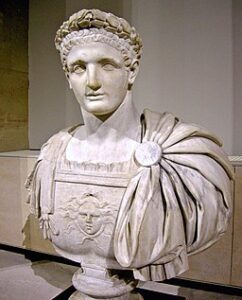“And to the angel of the church in Smyrna write, ‘These things says the First and the Last, who was dead, and came to life” (Revelation 2:8).
 The Roman Empire ruled over most of the known world in the era when the book of Revelation was originally written. One strategy employed by the Empire to help ensure loyalty among its citizens involved a requirement to worship the Roman Emperor as a divine being. Those who lived within the Roman Empire were required to burn incense once a year in honor of the Emperor and publicly affirm his divinity. Once a citizen fulfilled that requirement, he or she received a certificate of loyalty to the Roman Empire.
The Roman Empire ruled over most of the known world in the era when the book of Revelation was originally written. One strategy employed by the Empire to help ensure loyalty among its citizens involved a requirement to worship the Roman Emperor as a divine being. Those who lived within the Roman Empire were required to burn incense once a year in honor of the Emperor and publicly affirm his divinity. Once a citizen fulfilled that requirement, he or she received a certificate of loyalty to the Roman Empire.
Of all the cities under Roman jurisdiction, the city of Smyrna (pronounced “smer-na”) was one that stood out for its dedication to that initiative. In fact, Smyrna successfully competed against eleven other cities in an effort to construct the first temple dedicated to the worship of the Roman Emperor. But the worship of such “deities” wasn’t limited to the Emperor in Smyrna. Citizens of Smyrna also worshipped other pagan gods such as Zeus and Apollo, among others.
Smyrna was a seaport city that was located in what is now the modern-day country of Turkey. It was well-known in the first-century for it’s impressive architecture and wide, paved roadways. Smyrna was said to be the birthplace of the ancient poet Homer, and functioned as an important commercial center that imported and exported many types of goods.
This commercial activity helped establish Smyrna as a wealthy and prosperous city in the days of the first century. But unlike the ancient city of Ephesus mentioned earlier, the city of Smyrna still exists today under the contemporary name Izmir.
Jesus opened His letter to the church at Smyrna by identifying Himself as the First and the Last, the one who was dead and is alive. These terms are important because they establish several truths regarding the person of Christ. For instance, the term “First and Last” is associated with the all-powerful, eternal God who is the beginning and end of everything whenever it appears in a Biblical context.
Then there is the reference to “(He) who died and came to life again” (NIV). This description clearly identifies the speaker as Jesus, the One who died and rose from the dead according to Luke chapter twenty-four. So when these two references are taken together, they establish the clear Biblical teaching that Jesus is God.
Image Attribution: I, Sailko, CC BY-SA 3.0, via Wikimedia Commons

